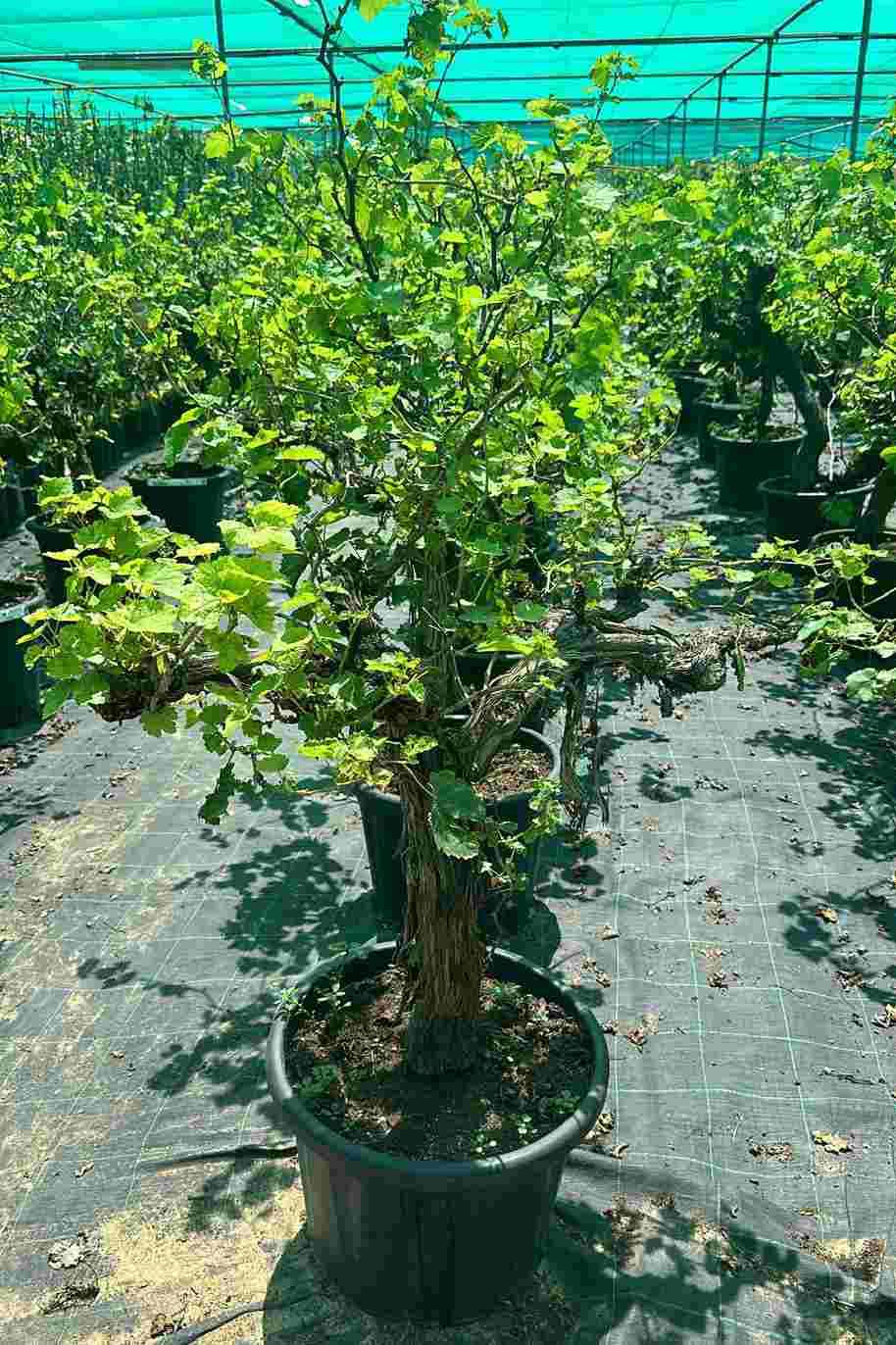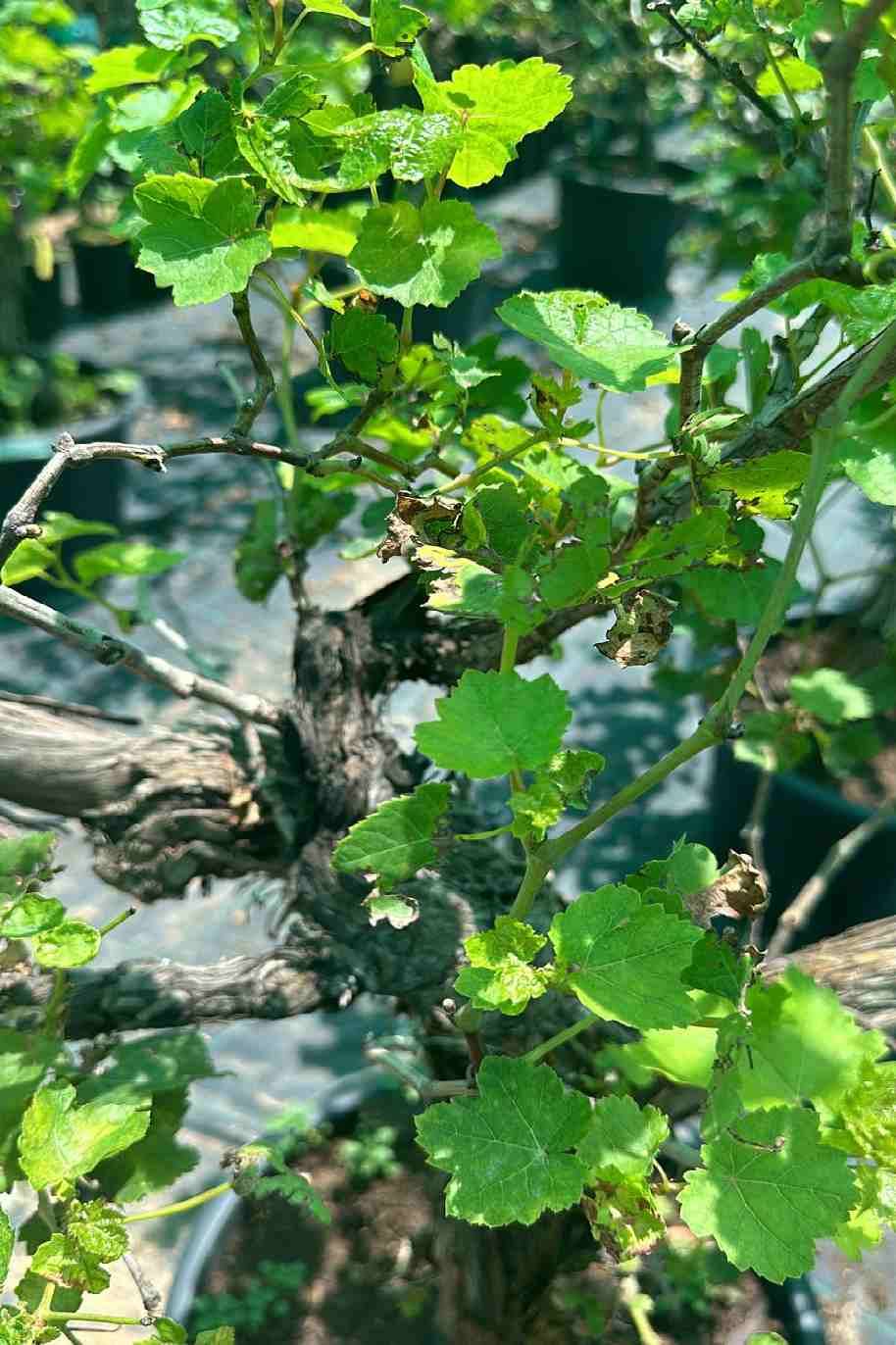Plant Bio
Grape Vine (Vitis vinifera) is a woody perennial vine that belongs to the Vitaceae family. It is widely cultivated for its edible fruits, which are commonly used for making wine, juices, jams, and various culinary dishes. Grape vines are also valued for their ornamental beauty, with lush foliage and clusters of sweet, juicy grapes that ripen in late summer to early fall. Here's a general description:
Growth Habit: Grape vines are vigorous climbers that can reach impressive lengths if left unpruned. They produce long, flexible stems that twine around supports such as trellises, arbors, fences, or pergolas. The vines can grow vertically or horizontally, depending on the training method used.
Leaves: Grape vines have large, lobed leaves that are typically dark green in color and have a slightly serrated margin. The leaves provide a lush backdrop for the clusters of grapes and turn vibrant shades of yellow, orange, or red in the fall before dropping in winter.
Flowers and Fruit: Grape vines produce small, greenish flowers in spring that are arranged in clusters known as inflorescences. These flowers give way to clusters of grapes, which vary in color, size, and flavor depending on the grape variety. Grapes can be red, green, purple, or black and range from sweet to tart in taste.
Varieties: There are countless grape varieties available, each with its own unique characteristics, including flavor, size, skin thickness, and cold hardiness. Some popular grape varieties for home cultivation include 'Concord,' 'Thompson Seedless,' 'Cabernet Sauvignon,' 'Chardonnay,' and 'Muscat.'
Care Guide for Grape Vine (Branched):
Sunlight: Grape vines require full sun to thrive and produce high-quality fruit. Plant them in a location where they can receive at least 6 to 8 hours of direct sunlight per day. Adequate sunlight promotes vigorous growth, photosynthesis, and fruit ripening.
Soil: Plant grape vines in well-draining soil with good fertility and a pH level between 6.0 and 6.5. Sandy loam or loamy soils enriched with organic matter, such as compost or well-rotted manure, provide ideal growing conditions for grapes. Avoid heavy clay soils that retain water, as they can lead to root rot.
Watering: Provide consistent moisture to grape vines, especially during the growing season (spring through fall), to support healthy growth and fruit development. Water deeply but infrequently, allowing the soil to dry out slightly between waterings. Avoid overwatering, as it can increase the risk of fungal diseases.
Fertilization: Apply a balanced fertilizer formulated for fruit-bearing plants in early spring before the growing season begins. Follow the manufacturer's instructions for application rates and timing. Avoid excessive nitrogen fertilization, as it can promote excessive foliage growth at the expense of fruit production.
Training and Pruning: Train grape vines to a trellis, arbor, or support structure using a suitable training system such as the Guyot, Spur, or Cordon method. Prune grape vines annually during the dormant season (late winter to early spring) to remove dead, diseased, or overcrowded wood and maintain an open canopy for sunlight penetration and air circulation.
Pest and Disease Control: Monitor grape vines regularly for signs of pests such as aphids, mealybugs, spider mites, and grapevine leafhoppers. Treat infestations promptly with insecticidal soap, neem oil, or other appropriate pesticides. Additionally, practice good cultural practices such as pruning, proper spacing, and weed control to reduce the risk of fungal diseases such as powdery mildew, downy mildew, and botrytis.
Harvesting: Harvest grapes when they reach their full ripeness and desired flavor profile, typically in late summer to early fall, depending on the grape variety and growing conditions. Grapes should be firm, plump, and evenly colored, with a slight bloom on the skin. Use sharp pruning shears to cut the clusters from the vine, leaving a short stem attached.
Winter Protection (in cold climates): In regions with cold winters, provide winter protection for grape vines by covering them with frost blankets or cloths when frost or freezing temperatures are forecasted. Alternatively, consider planting cold-hardy grape varieties suited to your climate zone.
By following these care guidelines, you can cultivate healthy, productive grape vines that yield delicious fruit season after season. Adjust care practices based on your specific grape variety, climate, and growing conditions to ensure optimal growth and fruit production.









